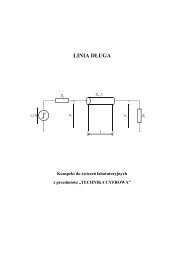9 Interlayer Exchange Interactions in Magnetic Multilayers
9 Interlayer Exchange Interactions in Magnetic Multilayers
9 Interlayer Exchange Interactions in Magnetic Multilayers
You also want an ePaper? Increase the reach of your titles
YUMPU automatically turns print PDFs into web optimized ePapers that Google loves.
334 9 <strong>Interlayer</strong> <strong>Exchange</strong> <strong>Interactions</strong> <strong>in</strong> <strong>Magnetic</strong> <strong>Multilayers</strong><br />
adapted) Friedel sum rule [54] for the magnetization and charge of an the magnetic<br />
“impurities.”<br />
9.3.4 Unified Picture <strong>in</strong> Terms of Quantum Interferences<br />
The coexistence of a variety of apparently different mechanisms predict<strong>in</strong>g essentially<br />
similar behavior for the coupl<strong>in</strong>g led to a somewhat puzzl<strong>in</strong>g and controversial<br />
situation regard<strong>in</strong>g the true nature of the mechanism of <strong>in</strong>terlayer exchange coupl<strong>in</strong>g.<br />
This puzzle was solved when Bruno [55, 56] and subsequently Stiles [57] showed that<br />
the different approaches <strong>in</strong>deed corresponded to different approximations of a same<br />
mechanism. They reformulated it <strong>in</strong> a physically appeal<strong>in</strong>g picture <strong>in</strong> which the amplitude<br />
and phase of the oscillatory coupl<strong>in</strong>g are expressed <strong>in</strong> terms of the amplitude<br />
and phase of reflection coefficients for the electrons at the <strong>in</strong>terfaces between the<br />
spacer and the magnetic layers.<br />
This approach has been used by several authors to perform quantitative calculations<br />
for realistic systems [58–60].<br />
Furthermore, thanks to its physical transparency, this approach has enabled qualitative<br />
prediction of new behavior, for example oscillations depend<strong>in</strong>g on magnetic<br />
layer thickness [61] and on overlayer thickness [62].<br />
9.3.5 First-pr<strong>in</strong>ciples Calculations<br />
F<strong>in</strong>ally, numerous authors have performed first-pr<strong>in</strong>ciples calculations of <strong>in</strong>terlayer<br />
exchange coupl<strong>in</strong>g for realistic systems [63–72]. Besides model<strong>in</strong>g the approaches<br />
mentioned above, first-pr<strong>in</strong>ciples calculation plays a very important rôle <strong>in</strong> elucidat<strong>in</strong>g<br />
the mechanism of <strong>in</strong>terlayer exchange coupl<strong>in</strong>g: on one hand, it provides a test of<br />
the qualitative predictions of the simplified models, while on the other hand it yields<br />
quantitative predictions for realistic systems than can be compared critically with experimental<br />
observations. The most widely <strong>in</strong>vestigated system is the Co/Cu/Co(001)<br />
system, which has served as a benchmark for the theory of <strong>in</strong>terlayer exchange coupl<strong>in</strong>g.<br />
While early attemps yielded doubtful results, essentially because of the great<br />
difficulty of such numerical calculation, the most recent results have given results<br />
than can be considered satisfactory <strong>in</strong> many respects (see discussion below).<br />
9.4 Quantum Conf<strong>in</strong>ement Theory of <strong>Interlayer</strong> <strong>Exchange</strong> Coupl<strong>in</strong>g<br />
The purpose of this section is to present as simply as possible the mechanism of<br />
<strong>in</strong>terlayer exchange coupl<strong>in</strong>g <strong>in</strong> terms of quantum <strong>in</strong>terferences as a result of electron<br />
conf<strong>in</strong>ement <strong>in</strong> the spacer layer. The emphasis here will be on physical concepts rather<br />
than on mathematical rigor. This discussion is based on that given <strong>in</strong> Ref. [74].



